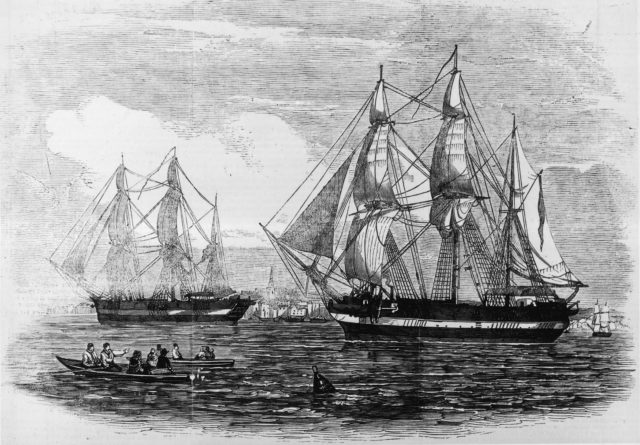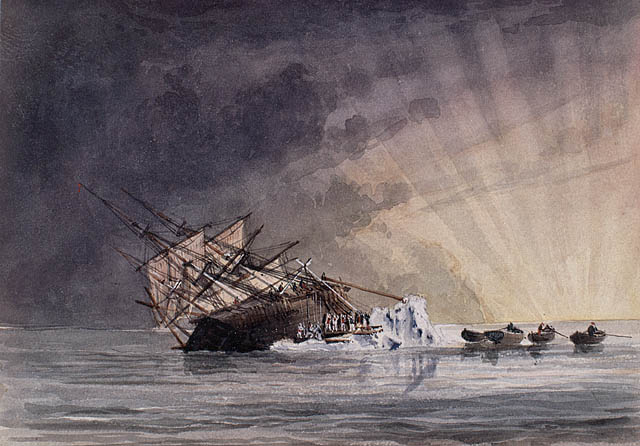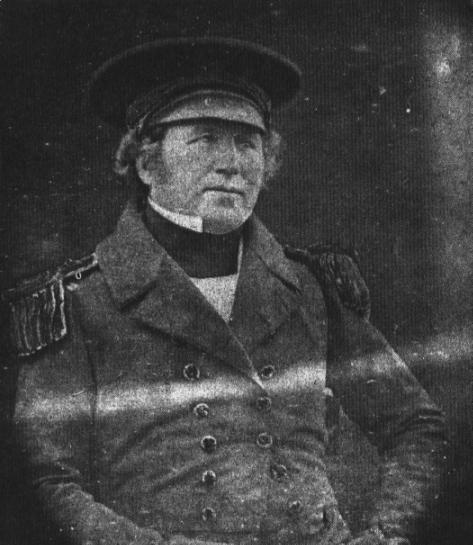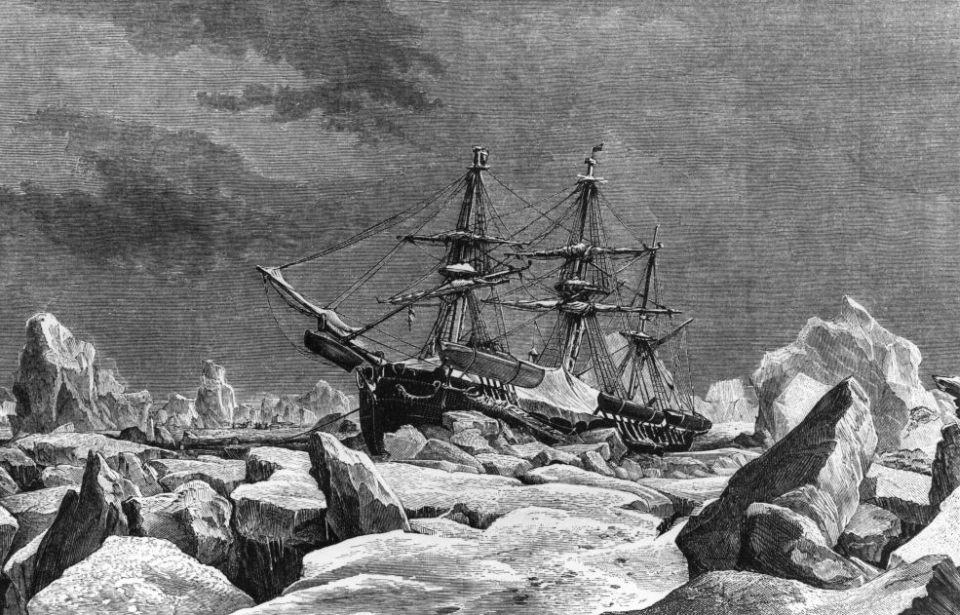In 1845, the British ship HMS Terror set out for her final voyage. She sunk into the depths of the ocean, where her wreckage remained undiscovered for nearly 200 years. First launched in 1813, HMS Terror served during the War of 1812 when she was used in many different conflicts: the Raid on Alexandria, the Battle of Bladensburg, the Battle of Baltimore, and the Burning of Washington, to name a few. She was seldom used after the war, and was laid up until 1828 before being recommissioned for service in the Mediterranean Sea.
She was eventually refitted for use during polar explorations. HMS Terror had been built to withstand battle, so it was assumed she’d be well-suited for harsh arctic conditions with the help of a few modifications. It was during one of these expeditions that the HMS Terror sunk before finally being rediscovered by a team of divers in 2016.
Arctic exploration
HMS Terror was sent on two polar explorations before her final ill-fated voyage: the Back expedition and the Ross expedition. Her third trip, the Franklin expedition, was the most famous, however. HMS Terror, along with HMS Erebus, left England in 1845 to explore the Northwest Passage in the Canadian Arctic and record what data they were able to gather. The crew met with disaster.

While on the voyage, the ship became stuck in the ice near what is now Nunavut. The 129 men from the ships were stuck there for over a year, with some of the crew dying during this time. They eventually decided to abandon both of the ships and attempt a trek inland. The group was led by Francis Crozier, second in command and captain of HMS Terror, and James Fitzjames, the captain of HMS Erebus.
She sinks
After departing the ships, the crew was never found again despite the fact that they had enough provisions to last them three years. It is assumed that they died during their attempt to get to safety as no bodies were ever found. When the men didn’t return to England, there were many attempts to find them, as it was strange for them to simply disappear.

Expeditions were dispatched between 1848 and 1866 which yielded some answers as to the crew’s fate. It appears as though they set off to Fort Resolution but never made it. They did leave behind some details explaining what happened, the most important of which was a letter written by Crozier.
He detailed that they had abandoned their ship on April 22, 1845, and three short days later only 105 of their crew remained alive. This was the last thing he wrote.
Underwater discovery
A team led by Parks Canada first discovered HMS Erebus near the Queen Maud Gulf in 2014 and found HMS Terror in Nunavut’s Terror Bay two years later. Notably, locals had been telling researchers for years that they should check Terror Bay for the wreckage. As it turns out, they were right all along. The wreck was difficult to find due to the extreme cold of the water and the ship’s location.
When investigators were finally able to dive down to the wreckage, they made some incredible discoveries. The most amazing of these was that the ship looked like it had only just sunk. The researchers even described it as “frozen in time.” It certainly didn’t look like it was nearly 200 years old.
Conditions in the area where HMS Terror was found were ideal for preservation. The deep, dark, calm waters kept much of the wreck intact – even some window panes were still in place. Furniture was still there and ornate dishes remained on the shelves. Intriguingly, in the captain’s cabin there were many desk drawers still closed tight from when the ship sunk. Researchers believe they contain documents that could reveal a lot about the expedition.
Further, they were able to tell by the fact that the propellor was still in the downward position that the ship had sunk during the springtime, making it less likely that the disaster was caused by ice.
Mysteries that remain
What researchers still don’t have an answer to, however, is what caused the ship to sink. They indicated that there were no obvious internal or external factors that might have caused the HMS Terror to sink, such as damage. According to lead archaeologist Ryan Harris, “There’s no obvious reason for Terror to have sunk. It wasn’t crushed by ice, and there’s no breach in the hull. Yet it appears to have sunk swiftly and suddenly and settled gently on the bottom.”

More from us: A Chilling Discovery Led To This Israeli Site’s Name: The ‘Cave of Horror’
Since many questions remain about the HMS Terror, researchers are still looking for answers in what has now become a historic site operated by Parks Canada.
